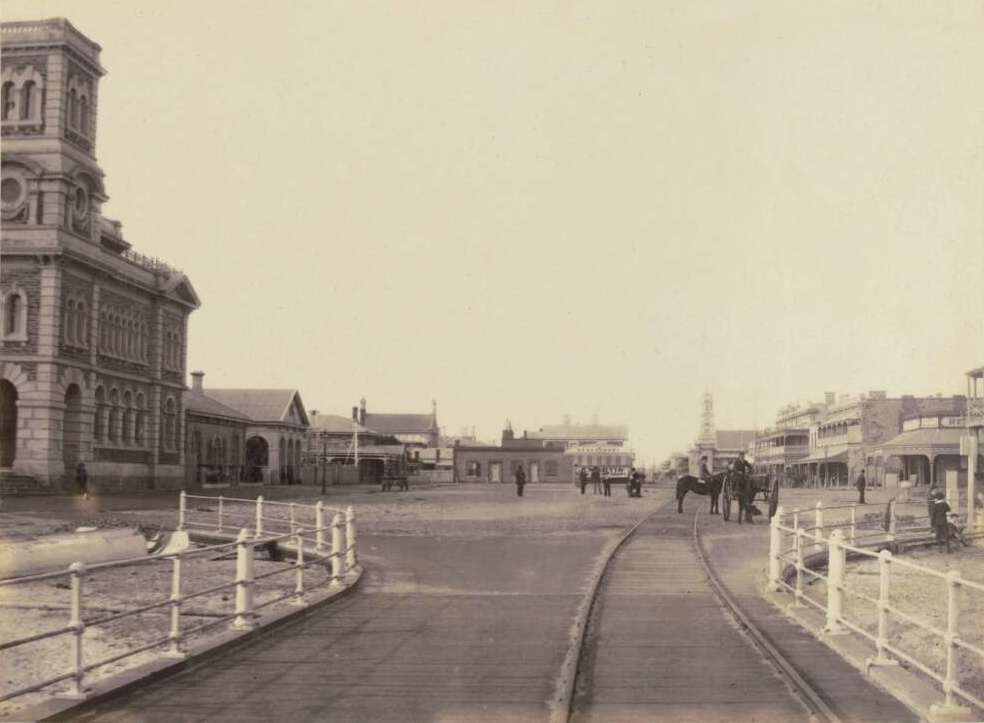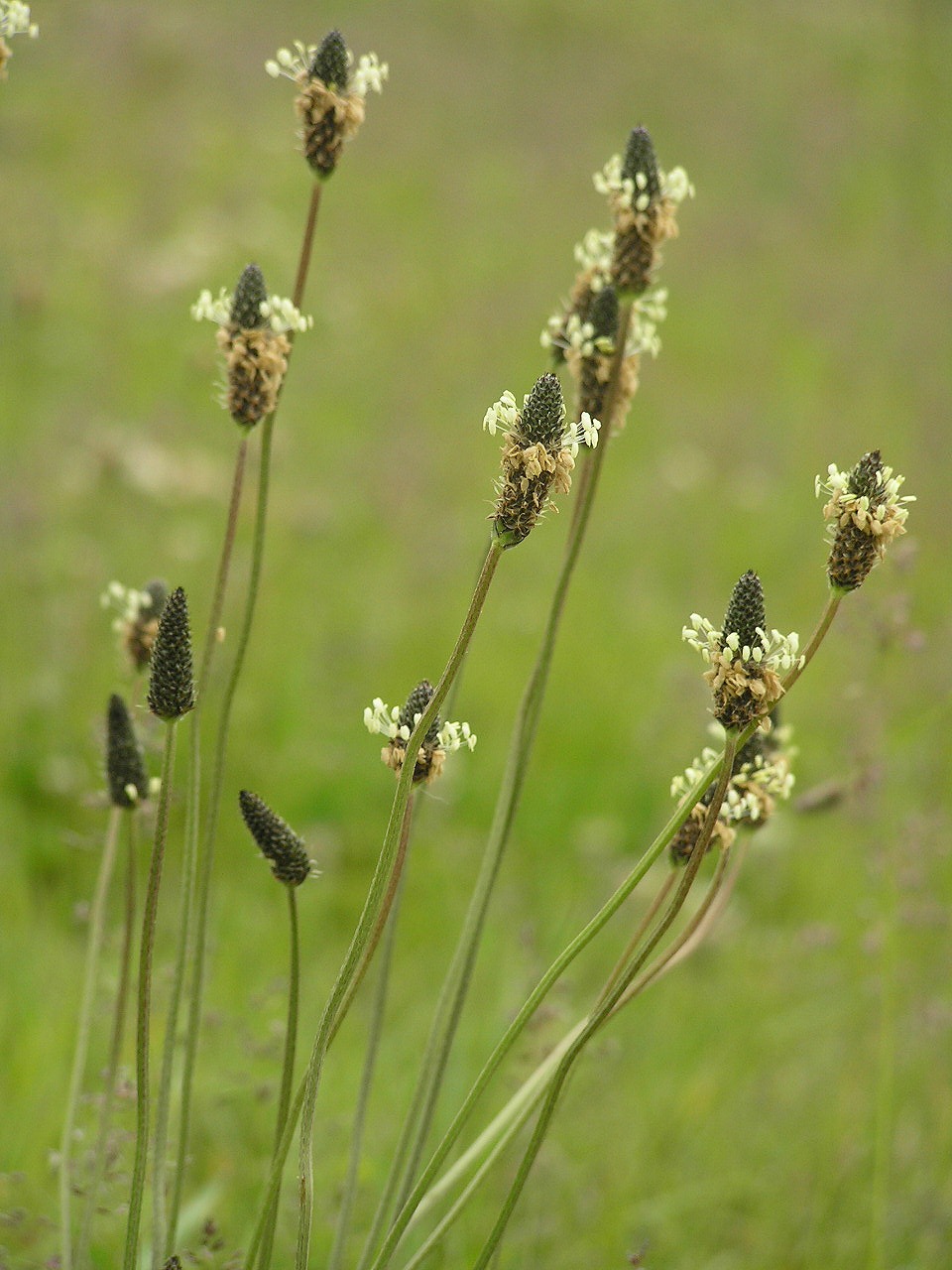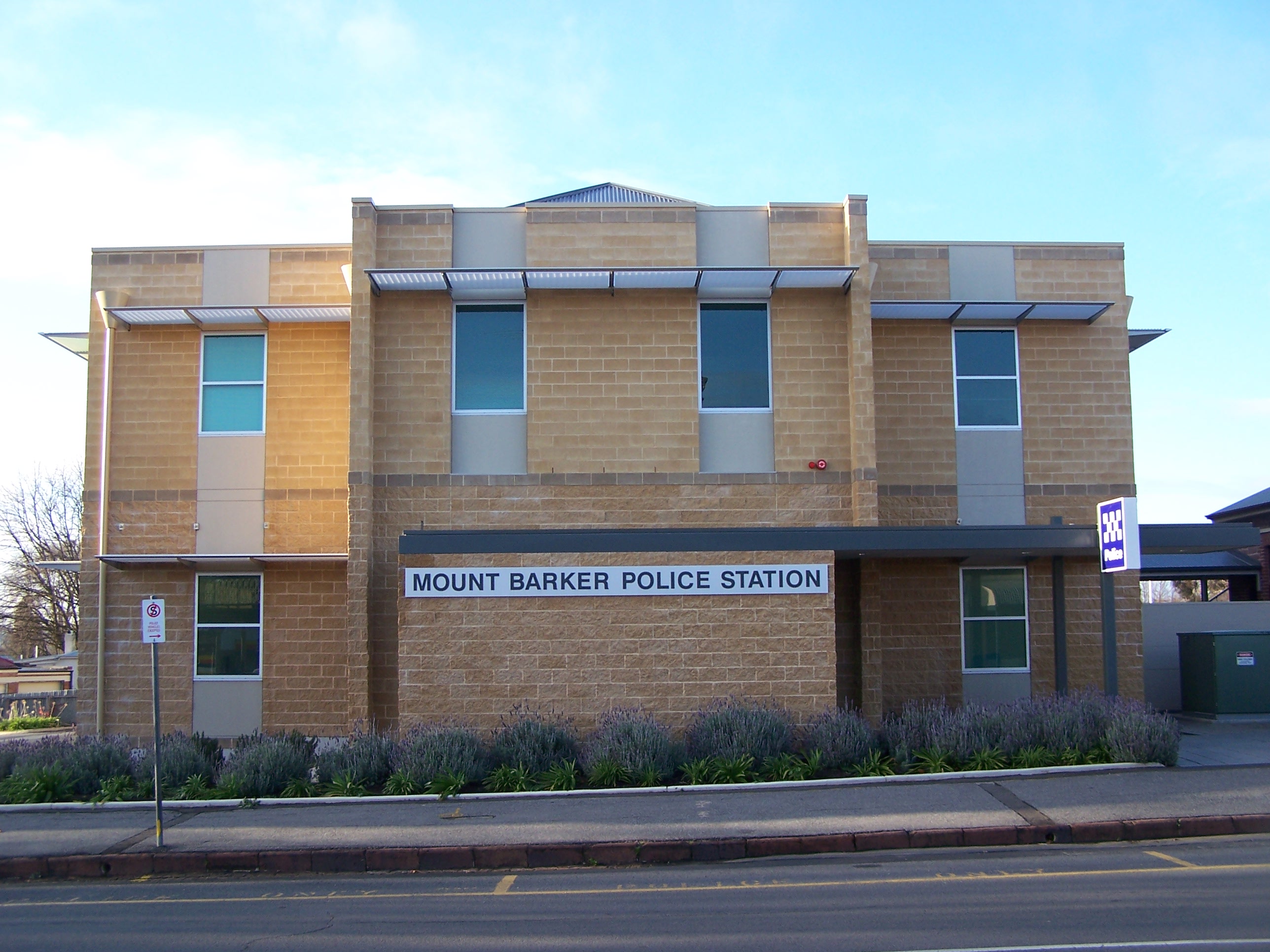|
William Rounsevell
William Rounsevell (c. 1816 – 5 October 1874) was a businessman of Cornish origins who founded a livery stable and mail coach business in the early years of colonial South Australia. His sons John Rounsevell (c.1836–1902) and Ben Rounsevell (1842–1923) were prominent businessmen, pastoralists and politicians in South Australia. The emigrants Four children of John Rounsevell (c. 1780 – 6 November 1856) and Jenny (née Herring) (c. 1779 – 23 March 1858) of Boscastle, Cornwall emigrated to South Australia: *John Rounsevell (c. 1811 – 30 September 1885) and his wife Elizabeth (née Popplestone or Poplestone) (c. 1811 – 19 October 1877) and their daughter Mary Jane (later Mrs August Meyer) arrived aboard ''City of Adelaide'' in July 1839. They settled at "Tara" at Little Hampton and had a large family. *Mary (c. 1813 – ), with her husband James Turner aboard ''Royal Admiral'' in January 1838. *William Rounsevell, the subject of this article, with wife Grace (née Ro ... [...More Info...] [...Related Items...] OR: [Wikipedia] [Google] [Baidu] |
Livery Stable
A livery is an identifying design, such as a uniform, ornament, symbol or insignia that designates ownership or affiliation, often found on an individual or vehicle. Livery will often have elements of the heraldry relating to the individual or corporate body feature in the livery. Alternatively, some kind of a personal emblem or badge, or a distinctive colour, is featured. The word itself derives from the French ''livrée'', meaning ''dispensed, handed over''. Most often it would indicate that the wearer of the livery was a servant, dependant, follower or friend of the owner of the livery, or, in the case of objects, that the object belonged to them. In the late medieval phenomenon of bastard feudalism, livery badges worn by the "retainers" of great lords, sometimes in effect private armies, became a great political concern in England. Etymology "In the ''Black'' Book of 1483, it was laid down that each person should receive "... for his Livery at night, half a chet loaf, o ... [...More Info...] [...Related Items...] OR: [Wikipedia] [Google] [Baidu] |
The South Australian Advertiser
''The Advertiser'' is a daily Tabloid (newspaper format), tabloid format newspaper based in the city of Adelaide, South Australia. First published as a broadsheet named ''The South Australian Advertiser'' on 12 July 1858,''The South Australian Advertiser'', published 1858–1889 National Library of Australia, digital newspaper library. it is currently a tabloid printed from Monday to Saturday. ''The Advertiser'' came under the ownership of Keith Murdoch in the 1950s, and the full ownership of Rupert Murdoch in 1987. It is a publication of Advertiser Newspapers Pty Ltd (ADV), a subsidiary of News Corp Australia, itself a subsidiary of News Corp. Through much of the 20th century, ''The Advertiser'' was Adelaide's morning broadsheet, ''The News (Adelaide), The News'' the afternoon tabloid, wit ... [...More Info...] [...Related Items...] OR: [Wikipedia] [Google] [Baidu] |
Glenelg, South Australia
Glenelg is a beach-side suburb of the South Australian capital of Adelaide. Located on the shore of Holdfast Bay in Gulf St Vincent, it has become a tourist destination due to its beach and many attractions, home to several hotels and dozens of restaurants. Established in 1836, it is the oldest European settlement on mainland South Australia. It was named after Lord Glenelg, a member of British Cabinet and Secretary of State for War and the Colonies. Through Lord Glenelg the name derives from Glenelg, Highland, Scotland. History Prior to the 1836 British colonisation of South Australia, Glenelg and the rest of the Adelaide Plains was home to the Kaurna group of Aboriginal Australians. They knew the area as "Pattawilya" and the local river as "Pattawilyangga", now named the Patawalonga River. Evidence has shown that at least two smallpox epidemics had killed the majority of the Kaurna population prior to 1836. The disease appeared to have come down the Murray River from ... [...More Info...] [...Related Items...] OR: [Wikipedia] [Google] [Baidu] |
Gawler, South Australia
Gawler is the oldest country town on the Australian mainland in the state of South Australia. It was named after the second Governor (British Vice-Regal representative) of the colony of South Australia, George Gawler. It is about north of the centre of the state capital, Adelaide, and is close to the major wine producing district of the Barossa Valley. Topographically, Gawler lies at the confluence of two tributaries of the Gawler River, the North and South Para rivers, where they emerge from a range of low hills. Historically a semi-rural area, Gawler has been swept up in Adelaide's growth in recent years, and is now considered by some as an outer northern suburb of Adelaide. It is counted as a suburb in the Outer Metro region of the Greater Adelaide Planning Region. History A British colony, South Australia was established as a commercial venture by the South Australia Company through the sale of land to free settlers at £1 per acre (£2/9/5d or £2.47 per hectare). Gawl ... [...More Info...] [...Related Items...] OR: [Wikipedia] [Google] [Baidu] |
The Chronicle (Adelaide)
''The Chronicle'' was a South Australian weekly newspaper, printed from 1858 to 1975, which evolved through a series of titles. It was printed by the publishers of '' The Advertiser'', its content consisting largely of reprints of articles and Births, Marriages and Deaths columns from the parent newspaper. Its target demographic was country areas where mail delivery was infrequent, and businesses which serviced those areas. ''History'' ''South Australian Weekly Chronicle'' When ''The South Australian Advertiser'' was first published, on 12 July 1858, the editor and managing director John H. Barrow also announced the ''South Australian Weekly Chronicle'', which published on Saturdays. ''South Australian Chronicle and Weekly Mail'' On 4 January 1868, with the installation of a new steam press, the size of the paper doubled to four sheets, or sixteen pages and changed its banner to ''The South Australian Chronicle and Weekly Mail''. The editor at this time was William Hay, and i ... [...More Info...] [...Related Items...] OR: [Wikipedia] [Google] [Baidu] |
Plantago Lanceolata
''Plantago lanceolata'' is a species of flowering plant in the plantain family Plantaginaceae. It is known by the common names ribwort plantain, narrowleaf plantain, English plantain, ribleaf, lamb's tongue, and buckhorn. It is a common weed on cultivated or disturbed land. Description The plant is a rosette-forming perennial herb, with leafless, silky, hairy flower stems (). The basal leaves are lanceolate spreading or erect, scarcely toothed with 3-5 strong parallel veins narrowed to a short petiole. The flower stalk is deeply furrowed, ending in an ovoid inflorescence of many small flowers each with a pointed bract. Each inflorescence can produce up to two hundred seeds. Flowers are ( calyx green, corolla brownish), 4 bent back lobes with brown midribs and long white stamens. It is native to temperate Eurasia, widespread throughout the British Isles, but scarce on the most acidic soils ( pH < 4.5). It is present and widespread in the Americas and Australia as an |
Perennial Ryegrass
''Lolium perenne'', common name perennial ryegrass, English ryegrass, winter ryegrass, or ray grass, is a grass from the family Poaceae. It is native to Europe, Asia and northern Africa, but is widely cultivated and naturalised around the world. Description The plant is a low-growing, tufted, hairless grass, with a bunching (or tillering) growth habit. The leaves are dark green, smooth and glossy on the lower surface, with untoothed parallel sides and prominent parallel veins on the upper surface. The leaves are folded lengthwise in bud (unlike the rolled leaves of Italian ryegrass, ''Lolium multiflorum'') with a strong central keel, giving a flattened appearance. The ligule is very short and truncated and often difficult to see. The small white auricles grip the stem at the base of the leaf blade. Leaf sheaths at the base are usually tinged pink and hairless. Stems grow up to 90 cm. The inflorescence is unbranched, with spikelets on alternating sides edgeways-on to the ... [...More Info...] [...Related Items...] OR: [Wikipedia] [Google] [Baidu] |
Wild Horse Plains, South Australia
Wild Horse Plains is a locality in South Australia on the eastern coastline of Gulf St Vincent about north-northwest of the Adelaide city centre. Its name is attributed to Thomas Day, who found wild horses grazing within the locality around 1870. Its boundaries, created in June 1997, include the town of Wild Horse Plains, established in 1881 on Port Wakefield Road, and the former Government Town of Lorne. Port Lorne Road marks most of the northern boundary of Wild Horse Plains and is the access road to the former township of Lorne. Wild Horse Plains lies within the federal Division of Grey, the state electoral district of Narungga and the local government area of the Adelaide Plains Council The Adelaide Plains Council (formerly the District Council of Mallala) is a local government area in South Australia. It consists of a largely rural region along the Gulf St Vincent, covering a total area of approximately 926 km2. The coun .... The post office opened in 1878, conti ... [...More Info...] [...Related Items...] OR: [Wikipedia] [Google] [Baidu] |
Willunga, South Australia
Willunga is a town located to the south of Adelaide, South Australia in the City of Onkaparinga local government area, 47 km from the Adelaide city centre. This town has been considered a suburb of the Adelaide metropolitan area, and it is located within the McLaren Vale wine-growing region. In the 2016 census, Willunga recorded a population of 2,308. Willunga is connected to the town of McLaren Vale by a cycle path running along a former railway line and is nearby to the beaches of Aldinga Bay. Multiple festivals are hosted in Willunga, including the start and finish of the fourth leg of the Tour Down Under, the Fleurieu Folk Festival, the Almond Blossom Festival, and the Willunga Christmas Tree Festival. History Historically, Willunga is well known for its slate industry, which began in 1840 when a farmer named Edward Loud found slate on his property and later that year opened the first slate quarry. The name Willunga derives from the Aboriginal word ' willangga' m ... [...More Info...] [...Related Items...] OR: [Wikipedia] [Google] [Baidu] |
Nairne, South Australia
Nairne is a small township in the Adelaide Hills of South Australia. Nairne is about from Mount Barker, South Australia, in the federal Division of Mayo and in the state electoral district of Kavel. At the 2016 census, Nairne had a population of 4,842. History Nairne was founded by Matthew Smillie in 1839 and named for his wife's family. In 1854 the District Council of Nairne was established to govern local affairs of the town and its surrounds extending past Callington to the east. Chapman's Bacon Factory was founded in Nairne in 1899 by the Chapman family and was closed in 2002 and has since been developed into a successful and thriving complex including a supermarket, post office and several variety shops. In the late 1920s, the route of the Princes Highway, part of the main road route between Adelaide and Melbourne was changed to pass through Nairne, with road improvements from Mount Barker through Nairne to Kanmantoo. In turn, the route through Nairne became the '' ... [...More Info...] [...Related Items...] OR: [Wikipedia] [Google] [Baidu] |
Mount Barker, South Australia
Mount Barker is a city in South Australia. Located approximately 33 kilometres (21 miles) from the Adelaide city centre, it is home to 16,629 residents. It is the seat of the District Council of Mount Barker, the largest town in the Adelaide Hills, as well as one of the fastest-growing areas in the state. Mount Barker lies at the base of a local eponymous peak called the Mount Barker summit. It is 50 kilometres from the Murray River. Mount Barker was traditionally a farming area; many of the lots just outside the town area are farming lots, although some of them have been replaced with new subdivisions in recent times. History Mount Barker, the mountain, was sighted by Captain Charles Sturt in 1830, although he thought he was looking at the previously discovered Mount Lofty. This sighting of Mount Barker was the first by a European. Captain Collet Barker corrected Sturt's error when he surveyed the area in 1831. Sturt named the mountain in honour of Captain Barker after he was ... [...More Info...] [...Related Items...] OR: [Wikipedia] [Google] [Baidu] |
John Howard Clark
John Howard Clark (15 January 1830 – 20 May 1878) was editor of ''The South Australian Register'' from 1870 to 1877 and was responsible for its ''Echoes from the Bush'' column and closely associated with its ''Geoffry Crabthorn'' persona. Early years John was born in Birmingham, son of Francis Clark and Sons, Francis Clark (1799 – 1853), a silversmith also born in Birmingham. Grandfather Thomas Clark ran a school for boys, then a factory. His mother Caroline (1800 – 16 September 1877) was a daughter of mathematician Thomas Wright Hill (24 April 1763 – 13 June 1851) founder of what became Hazelwood School in Birmingham under her brother Rowland Hill (postal reformer), Rowland Hill (famous for inventing penny postage and important in South Australian history as the Secretary to the Commissioners for the Colonization of South Australia). Her eldest brother, Matthew Davenport Hill, was Recorder of Birmingham, penal reformer and a supporter of Edward Gibbon Wakefie ... [...More Info...] [...Related Items...] OR: [Wikipedia] [Google] [Baidu] |




